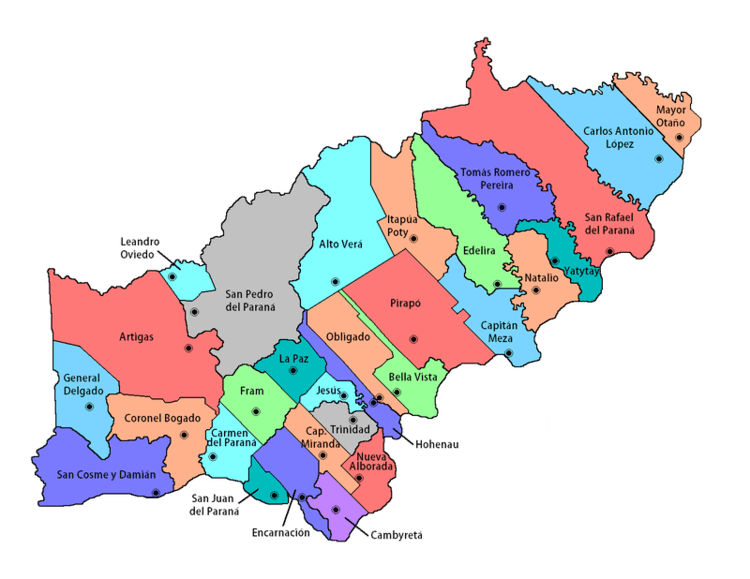Country Paraguay Area 16,525 km2 Founded 1906 | Capital Encarnacion | |
 | ||
University Universidad Nacional de Itapua | ||
Praia de itapua salvador bahia
Itapúa ([itaˈpu.a]) is a department in the southern region of Paraguay. The capital is the city of Encarnación. It is divided into 30 districts, making it the department with the most districts in the country.
Contents
- Praia de itapua salvador bahia
- Map of Itapa Department
- History
- Toponymy
- Demography
- Cultural diversity
- Administrative division
- Location
- Limits
- Climate
- References
Map of Itapúa-Department
History

This department was created after the breakup of the Misiones Department, with the city of Encarnación as the capital. It had a high economic growth in the first 30 years by the coming of immigrants and the Carlos Antonio Lopez Railway, the growth was accompanied with several ups and downs.
Then came an era of decline until the 50s when the Carnaval Encarnaceno became known and attracted tourists from various regions. In the 80s the department became more industrial, but modestly, compared with other departments like Central Department.
In 1989 the Yacyretá Dam displaced the people living in the Yacyretá Reservoir, which still continues. The San Roque González de Santa Cruz Bridge was inaugurated in 1991, connecting not only the city of Encarnación and Posadas, but Paraguay with Argentina.
Toponymy
The name is in Guaraní and refers to the place where Encarnación, the current capital city, was founded. The site was known as "itá" (rock, stone) and "punta" (tip); hence the name means "Tip of the Stone".
Demography
According to the 2002 National Census Itapúa has a total population of 453,692 inhabitants making it the third most populated department of the country after Central and Alto Paraná, 8,9% of Paraguay's total population lives in this department.
Cultural diversity
Much of the Itapúa region was colonized by immigrants from different origins, among them are the Italians, Germans, Russians, Ukrainians, French, Japanese, Poles, and recent time there were also immigrants from Syria and Lebanon. Because of this cultural diversity Itapúa was given the name "Melting pot", making it the most cosmopolitan department of Paraguay.
In the beginning, the first economic sector of the immigrants was the exploitation of natural resources, especially timber, in the Alto Paraná and San Rafael Hills, now a national park, but now they hold several thriving industries. They also engaged in agriculture (soybean, tung, corn, etc.) and livestock.
Administrative division
The department is divided into the following 30 districts:
Location
This department is located southeast of the Eastern Region of Paraguay.
Limits
Climate
The climate is humid subtropical with a tendency to low temperatures, the annual average is 15°C, with a maximum of 40°C and a minimum of -3°C. Rainfall is abundant, with an annual average of nearly 1,700 mm, recorded throughout most of the year except in July and August.
